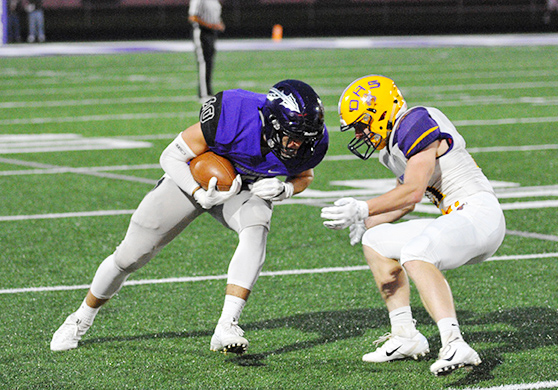Football: Attacking with the onside kick
In high school football, most of the focus on offense is on quarterbacks, running backs and receivers. On defense, it’s all about the linebackers and coverage players. Specialists are rarely given much attention.
 When it comes to special teams, most high school programs only focus on the essential aspects of the kicking game, like extra points and deep kickoffs. Occasionally, teams might practice a two-point conversion and maybe an onside kick. But what about the intentional use of the onside kick as an offensive weapon?
When it comes to special teams, most high school programs only focus on the essential aspects of the kicking game, like extra points and deep kickoffs. Occasionally, teams might practice a two-point conversion and maybe an onside kick. But what about the intentional use of the onside kick as an offensive weapon?
As a special teams coach, I tested the theory of onside kicking as a regular strategy by using data collected from the past seven years (see Fig. 1 below) at my local high school and by studying film. I analyzed the average starting position on a football drive from a normal kickoff versus a non-recovered onside kick. Another factor I considered was the chance for the opposing team to return the ball for a touchdown. I used data to show the statistical probability of a deep kickoff being returned for a touchdown versus an onside kick being returned. The return team, in high school, typically returns the ball to within 10 yards of where a failed onside kick is recovered.
» ALSO SEE: Dynamic drills to improve your team’s tackling
What this means is that by risking a first down you have a chance to win your offense another possession. This is based on the data showing the percentage of time teams scored when they recovered an onside kick and the data if the onside kick was not recovered and the opposing team scored on the ensuing drive. Other factors like wind, rain, temperature and even lighting on the field were considered.
I examined the film and collected data from seven different season. Each season averaged 12 games, totaling 83 games worth of film. During the 2012 season, the team advanced to the second round of the playoffs before it was knocked out, and during the 2016 season the team advanced to the South State Championship. The 2012 season was the first evidence of how well the onside kicks worked. During that season, we had both a left-footed and right-footed kicker. This added another element of surprise to the arsenal.
Between the 2014 and 2015 seasons, our school transferred from the Mississippi High School Activities Association (MHSAA) to the Mississippi Association of Independent Schools (MAIS), which oversees private schools. The success rate of the onside kick in the private association was not as high during the last two seasons, but it still has not been small enough to force us to quit the philosophy. Most of the onside kicks recovered during the past two seasons have been the lob kick and drive kick.
I encourage more coaches to use onside kicks, because the reward outweighs the risk every time. It adds an extra element to your team and allows for more unpredictability. By kicking more onside kicks, teams will have to respect the new attack and it allows your defense more time to rest. Football is a game of strategy, and this is an outside-of-the-box approach that more coaches should consider.
Jeremy Craig Mandolini is the special teams coordinator for the St. Joseph Catholic High School football team in Greenville, Mississippi.






